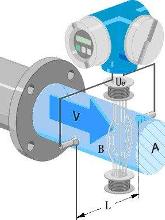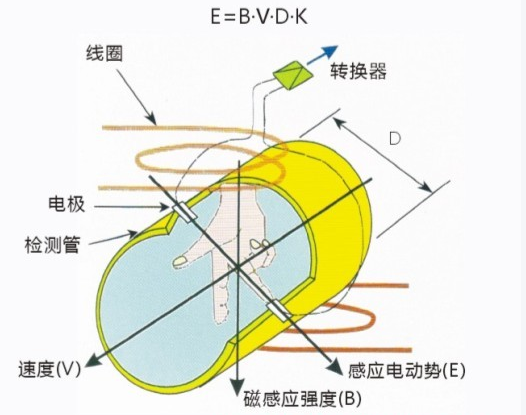The working principle of electromagnetic flowmeter -- I will learn it, let's take a look.
Introduction: This article explains the working principle of an electromagnetic flowmeter. You might not immediately think of "flow" when you hear the term, but this "flow" has nothing to do with traffic or movement. Let’s uncover what this "flow" really means.
1. Working Principle of Electromagnetic Flowmeter – Concept
An electromagnetic flowmeter is a device that measures the volumetric flow rate of conductive liquids using Faraday's law of electromagnetic induction. It has been widely used in flow measurement for many years, thanks to its reliable performance and high precision. The design and quality control system ensure fast response times and reduced output noise. Additionally, it can be lined to enhance its application range and durability in various environments.

2. Working Principle of Electromagnetic Flowmeter – Structure and Function
The structure of an electromagnetic flowmeter consists of several key components: a magnetic circuit system, a measuring conduit, electrodes, a casing, lining, and a converter.

The magnetic circuit system generates a uniform DC or AC magnetic field. The measuring conduit allows the conductive liquid to pass through. The electrodes detect the induced potential signal, which is proportional to the flow rate. The outer casing, made from ferromagnetic material, covers the excitation coil and protects against external magnetic interference. The lining increases corrosion resistance and prevents short-circuiting of the induced potential. Lastly, the converter amplifies and converts the signal into a standard output while suppressing noise.
3. Working Principle of Electromagnetic Flowmeter
The basic principle of the electromagnetic flowmeter is based on Faraday’s law of electromagnetic induction. In this context, the conductive medium inside the measuring tube acts like a metal rod moving through a magnetic field. Two coils at the top and bottom of the tube generate a constant magnetic field. When a conductive fluid flows through the tube, it induces an electromotive force (EMF). The direction of this EMF follows the “Fleming right-hand rule,†and its magnitude is determined by the formula:
Ex = B × D × v
Where:
- Ex = Induced potential (in volts)
- B = Magnetic induction (in teslas)
- D = Pipe inner diameter (in meters)
- v = Average flow velocity of the liquid (in meters per second)

The measuring tube is isolated from the fluid by a non-conductive inner liner (such as rubber or Teflon). An excitation coil is placed above and below the measuring tube. When an excitation current is applied, a magnetic field is created. A pair of electrodes is mounted on the inner wall of the tube, making contact with the liquid. These electrodes capture the induced potential and send it to the converter for processing.
So, that's how the electromagnetic flowmeter works! If you found this informative, you might also be interested in these related topics:
- 1. Influencing factors and selection/installation of electromagnetic flowmeters
- 2. Using and managing electromagnetic flowmeters effectively
- 3. How to solve weak signal issues in electromagnetic flowmeters
Electromagnetic Flowmeter
Dual Axis Solar Tracker System
Dual Axis Solar Tracker System,Sun Power Single Axis Solar Tracker,Dual Axis Solar Sun Tracker pv tracker,Pv Solar Tracking System
Hebei Jinbiao Construction Materials Tech Corp., Ltd. , https://www.pvcarportsystem.com